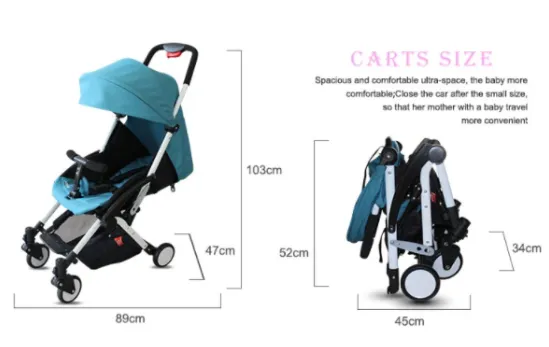
- Afrikaans
- Albanian
- Amharic
- Arabic
- Armenian
- Azerbaijani
- Basque
- Belarusian
- Bengali
- Bosnian
- Bulgarian
- Catalan
- Cebuano
- Corsican
- Croatian
- Czech
- Danish
- Dutch
- English
- Esperanto
- Estonian
- Finnish
- French
- Frisian
- Galician
- Georgian
- German
- Greek
- Gujarati
- Haitian Creole
- hausa
- hawaiian
- Hebrew
- Hindi
- Miao
- Hungarian
- Icelandic
- igbo
- Indonesian
- irish
- Italian
- Japanese
- Javanese
- Kannada
- kazakh
- Khmer
- Rwandese
- Korean
- Kurdish
- Kyrgyz
- Lao
- Latin
- Latvian
- Lithuanian
- Luxembourgish
- Macedonian
- Malgashi
- Malay
- Malayalam
- Maltese
- Maori
- Marathi
- Mongolian
- Myanmar
- Nepali
- Norwegian
- Norwegian
- Occitan
- Pashto
- Persian
- Polish
- Portuguese
- Punjabi
- Romanian
- Russian
- Samoan
- Scottish Gaelic
- Serbian
- Sesotho
- Shona
- Sindhi
- Sinhala
- Slovak
- Slovenian
- Somali
- Spanish
- Sundanese
- Swahili
- Swedish
- Tagalog
- Tajik
- Tamil
- Tatar
- Telugu
- Thai
- Turkish
- Turkmen
- Ukrainian
- Urdu
- Uighur
- Uzbek
- Vietnamese
- Welsh
- Bantu
- Yiddish
- Yoruba
- Zulu
Aug . 09, 2024 09:00 Back to list
Choosing the Best Front Derailleur for Your Mountain Bike Performance and Compatibility Needs
Choosing the Right Front Derailleur for Mountain Biking
When it comes to mountain biking, the right components can dramatically enhance your riding experience, with the front derailleur being a crucial element in the equation. The front derailleur is responsible for shifting the chain between the two or three chainrings at the front of your bike, allowing you to adapt to various terrains and inclines. Understanding how to select the appropriate front derailleur can greatly improve your bike's performance and your overall enjoyment on the trails.
Types of Front Derailleurs
Mountain bike front derailleurs generally come in two types top-swing and bottom-swing. The top-swing derailleur features an arm that moves upward to shift the chain, while the bottom-swing model has an arm that moves downward. Choosing between these types depends largely on your bike frame and personal preference. Top-swing derailleurs tend to offer better clearance with broader tires, whereas bottom-swing versions can provide a more streamlined profile for bikes with less space.
Compatibility
One of the first considerations when selecting a front derailleur is compatibility with your bike's drivetrain. Most mountain bikes utilize either a 1x or a 2x/3x drivetrain system. A 1x system consists of a single chainring upfront, relying solely on a rear derailleur for gear changes, while 2x and 3x systems have multiple chainrings. If you opt for a multi-chainring setup, ensure that the front derailleur you choose is designed to accommodate the number of chainrings on your bike.
Additionally, the derailleur must match the width of your bike's bottom bracket, as well as be compatible with the shifters you plan to use. Most modern derailleurs are designed to work seamlessly with specific shifters, so checking compatibility is essential to avoid shifting issues down the line.
front derailleur for mountain bike

Chainline and Capacity
Another vital factor to consider is the chainline—the distance between the chain and the centerline of the bike frame. An appropriate chainline ensures efficient gear shifting and minimizes wear on the components. High-quality front derailleurs accommodate various chainlines, but it's crucial to check the manufacturer's specifications to achieve the best alignment with your crankset.
Capacity refers to the derailleur's ability to handle the total number of teeth across all chainrings in conjunction with the rear cogs. If you have larger chainrings or a wide-range cassette, ensure your front derailleur has sufficient capacity to manage the gear ratios without performance loss.
Adjustability and Ease of Setup
The adjustment features of a front derailleur can make installation and fine-tuning much easier. Look for models that offer multiple settings to optimize your setup, such as limit screws that prevent the chain from overshifting, as well as tension adjustments for fine-tuning responsiveness. Properly set up derailleurs ensure smooth and reliable shifts, which are particularly beneficial when tackling steep climbs or technical sections on the trail.
Conclusion
Choosing the right front derailleur for your mountain bike can significantly enhance your riding experience. Taking into account factors such as type, compatibility, chainline, capacity, and adjustability will ensure that you select a derailleur that complements your bike's design and your personal riding style. With the right front derailleur, you can tackle any trail with confidence, knowing that your bike is equipped for optimal performance. Whether you’re a casual rider or a competitive racer, investing time in the selection process will undoubtedly pay off in your next mountain biking adventure.
-
The Ultimate Kids' Four-Wheeler Experience
NewsJul.09,2025
-
The Ultimate Guide to Mountain Bikes: Gear Up for Your Ride
NewsJul.09,2025
-
The New Age of Cycling: Electric Bikes for Every Rider
NewsJul.09,2025
-
The Best Kids Bicycles: Ride in Style and Safety
NewsJul.09,2025
-
The Best 3-Wheel Scooters for Kids: Fun, Safety, and Adventure
NewsJul.09,2025
-
Revolutionize Your Ride: Affordable Electric Bikes
NewsJul.09,2025
-
Finding the Perfect Mountain Bike for Every Rider
NewsJul.09,2025



